#microbialite
Explore tagged Tumblr posts
Text


microbialites
#water#lake#formations#microbialites#stromatolites#blurry#vintage#photography#scenery#outdoors#nature#great salt lake#utah#by me
0 notes
Text
I was tagged by @wellmetmat in @perdvivly's ask meme that's going around- thanks for the interest! A few questions, they shall be answered. I won't tag anyone else for now, but anyone who sees this should absolutely respond if they're so inclined.
1. What virtue do you most often see in other people that you feel comparatively deficient in?
Easy one for me: diligence. Consistency, commitment, patient sustained focus on moderate challenges. Being there not on day 1 but on day 1000.
It's a skill I greatly admire in others, and I'm often drawn to those who can practice it successfully and consistently. The virtue of diligence has a way of making the world around oneself a dramatically better place, so being attracted to such people really works out well for me in the long run. Good parenting is perhaps one of the ur-examples here; the stakes of consistency get about as high as they reasonably can, and the rewards are just as clear. I've heard parents say that it's a time of very long days and very short years, and I often strive to give my days and my years the same quality- with not as much success as I'd like.
2. Show us an object in your daily life that you have an emotional attachment to - tell us a little bit about it if you want! (a favourite mug perhaps? socks with a cute pattern? dealers choice)
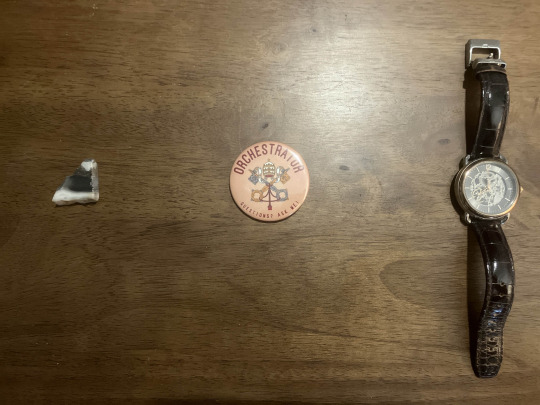
I actually live more-or-less surrounded by little curios that meet this description, so I had a lot to choose from. It's a lifestyle, or at least a method of interior decorating, that makes me really happy. I grabbed these three more or less at random. From left to right:
Every geologist has a collection of boring-looking rocks with cool science attached; this is the star of my collection. It's a microbialite, meaning roughly that it's a 'fossil' of an ancient microbial mat. This one is from the Buck Reef Chert in South Africa, basically a piece of flint. It's 3.42 billion years old, from the Paleoarchean. It's nearly seven times older than multicellular life, and even predates oxygenic photosynthesis (which is the pattern where plants or green algae uptake CO2 and release oxygen); the organisms that created this fossil breathed iron instead. So it's the sort of organism that was common in the shallower waters of Earth's oceans back in the most primordial ecosystems we have a record of. A relic from an alien world, older than a full third of the stars in the Milky Way galaxy. I find it very beautiful to be biologically related to it, and to be part of the same uninterrupted organic chemical reaction.
In the middle is my orchestrator badge for a university class which conducts an elaborate simulation of the papal election of 1492 and its aftermath, run by a professor in the history department- this is last year's. You may recognize 1492 in the Italian peninsula as 'interesting times'. It's taken for class credit, but the heart of it is a LARP that plays out over the course of about two and a half weeks, with full costuming and set-dressing. Every student is assigned a particular period character; most are voting cardinals, some are monarchs ruling over France or Spain and trying to get a favorable pope for themselves, a few are invented minor roles like vote counters that wouldn't have been recorded by history (so that clever cardinals can bribe them, among other things; we have rules for how much the vote-takers can cheat). After suitable prep, we let them loose, and watch the poor bastards chase incentive gradients far enough to burn Europe to the ground. I myself pretend to be a mere orchestrator for the first three days of the simulation, and act mostly as a custodian for the monarchs, but then I dramatically reveal myself to actually be Sultan Bayezid II, of the Ottoman Empire, and then proceed to menace Europe with my impossible wealth, vast armies, and advanced technologies. It is, without fail, a delight.
The right is a watch given to me as a birthday gift some years ago by my dear sister, one of the marvelous transparent ones where you can see finely made gears and springs all working. It's effective for being taken seriously in Europe; combined with brown leather shoes and a thoughtful choice of shirt, it's enough to elevate you above the 'slobby American tourist' first impressions. The watch's finest hour was when I wore it to the front row of the Penn and Teller production of Shakespeare's Tempest. The show was full of stage magic to supplement the play itself, because of course it was, and this watch was irresistible to them during the audience-participation bits. Ariel the wind spirit made a great show of stealing it off my wrist, and of disappearing it and so on multiple times.
3. If you could choose, what level of fame would you want? How many people would you want to recognise you?
There's a level of demifame that I think is just right: enough respect within a widely-spread subculture to earn a comfortable income from fans, and relative anonymity outside it. Jo Walton is at about that sweet spot, for a concrete example. In practice, I think this translates to a few tens of thousands of people around the world that would recognize you, but the key is that they're not randomly selected: they're the people that you share that subculture with, so there's a baseline of mutual regard and shared values even when you're greeted out of nowhere by a stranger in a strange city.
4. Where do you feel language is least adequate to capture, communicate, or express your experience?
What a mean question to ask by text! Ha.
There's a set of experiences you can reach, which I happened to find both through scientific literacy and mindfulness meditation, involving the conditionality and contingencies of personal identity. You may have felt it a little bit when I was talking about my favorite rock, just now; you might not have. I have a powerful and sustained sense of myself as an expression of natural processes, or perhaps of the role of consciousness in illuminating the full depth of that process. It's quite comforting, I suppose, though even that's not a particularly apt description really. I think I called it being 'deep okay' a while back, though I don't recall where; I don’t think I came up with that label myself though. It was here!
5. If you had to come up with a question with the following criteria:
a) it should disuade knee-jerk reaction answers (i.e. it shouldn't be something people are likely to have spent a lot of time considering before)
b) it shouldn't be too specialised (the audience should be general, don't ask about people's top 3 byzantine spice merchants opperating between 754AD-816AD)
c) it shouldn't be needlessly emotionally charged or divisive
d) it should be a question you expect people to have lots of varied opinions about
What would your question be?
What are the kinds of magic you most wish for, or the laws of reality that you most wish could be overcome? What would this allow you to become?
---
Actually I lied I'm tagging @ritterum @femmenietzsche @eka-mark if they haven't been already.
15 notes
·
View notes
Photo

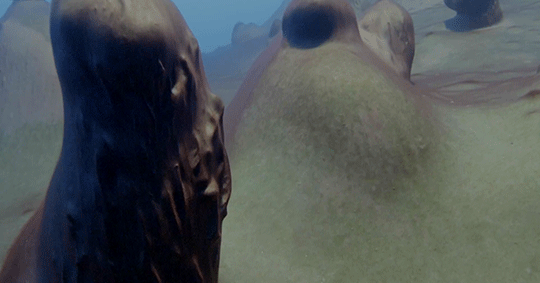
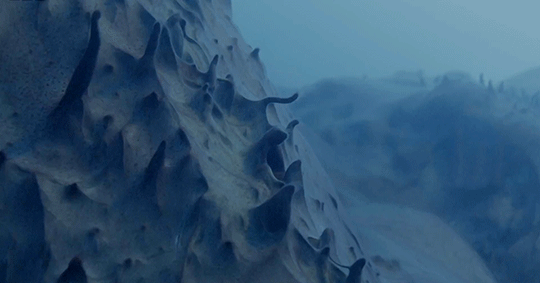

At the bottom of Lake Untersee in Antarctica are giant stromatolites, an ancient form of life on our planet. They first appeared closer in time to the formation of Earth, three and a half billion years ago, than to the present day. Scientists hope that studying these organisms in such a hostile environment will help us understand and recognize life on icy worlds beyond our own. BBC Earth
#BBC Earth#antarctica#lake untersee#stromatolites#microbialite#cyanobacteria#''scully you're not gonna believe this''
1K notes
·
View notes
Photo
Me: put simply, these are sedimentary ‘jawbreakers’ made by a microbial mat
prof editing my draft: no, less simply
Me: put simplyer, ~+*pet rock*~+

#gammy speaks#microbialite#stromatolite#microbial mat#pet rocks#she started it by calling them the closest thing you can get to a pet rock#so I’m not wrong#pet rock#I dubbed them#the hardy boys#bc they are hard to kill
474 notes
·
View notes
Text
What Is Life?
I've republished my 2015 feature article for the now-defunct magazine Mosaic. Would we recognize life if we found it on other worlds? I went to western Canada to find out
If we met new life – on this planet or the next – would we know it when we saw it? [This piece originally ran in Mosaic Science on October 20, 2015, but the publisher decided to remove all of the magazine’s archives from the web. This is the complete text as published — including British spelling — using my photographs instead of the original illustrations.] “Why would NASA want to study a lake…
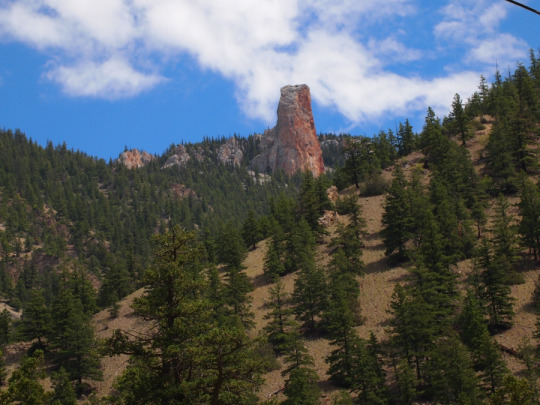
View On WordPress
#astrobiology#astrochemistry#biochemistry#DNA#exoplanets#extremophiles#Mars#microbialites#stromatolites#XNA
4 notes
·
View notes
Text
Exploring Mars from The Depths of a Canadian Lake
Exploring Mars from The Depths of a Canadian Lake
In late October 2020 one of my brothers from another mother, Michel Joseph, messaged me to ask if Kathryn and I wanted to go scuba diving in Pavilion Lake. Since Kathryn had some prior work commitments she could not reschedule, Michel and I made a lightening trip up to Pavilion. Michel had dived this lake numerous times before and for this visit we seized upon a window of opportunity between a…
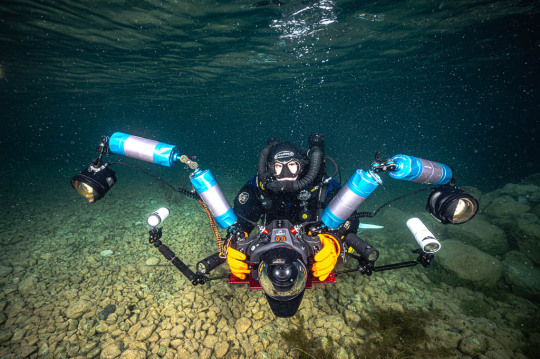
View On WordPress
#Alexander Kumar#BC Parks#British Columbia#Elon Musk#Extraterrestrial Life#Jett Britnell#Marble Canyon#marble canyon provincial park#mars#microbialites#NASA#NASA&039;s Perseverance Rover#pavilion lake#red planet#SCUBA diving#stromatolites#Thomas Edison’s 1910 film “A Trip to Mars.”#Tk&039;emlúps te Secwe̓pemc
2 notes
·
View notes
Photo

Modern microbialite from the Great Salt Lake (above), and a fossil microbialite from Uinta County (below) @nhmu! #nhmu #microbialite #microbe #bacteria #science #usofscience #saltlakecity #utah #microbiology #naturalhistorymuseumofutah #stromatolite (at Natural History Museum of Utah)
#bacteria#science#utah#stromatolite#microbiology#microbe#microbialite#naturalhistorymuseumofutah#nhmu#saltlakecity#usofscience
4 notes
·
View notes
Text
Fallout bothers me because if animals were struggling so much and plants practically entirely dead, that place should have been booming with bacteria. Algae everywhere. Without animals to graze on them, huge microbialites. I'm just saying
60 notes
·
View notes
Photo


This is a stunning, 17.5 x 14", polished stromatolite (Greysonia) section from the Miraflores Formation from Bolivia. One face has been cut and polished while the other side shows the natural, exterior to the stromatolite.
Stromatolites are the layered trace fossils of microbial life, primarily cyanobacteria. Some of them date back an astounding 3.4 billion years, making them the oldest record of life on planet Earth. Stromatolites and Microbialites were typically formed in shallow water by the growth of layer upon layer of cyanobacteria, a single-celled, photosynthesizing microbe. These layers often form very beautiful, and colorful banded structures in the rock.
For sale at: https://www.fossilera.com/fossils-for-sale/stromatolite-fossils
10 notes
·
View notes
Photo

“A thrombolite looks like a spongy rounded stone or rock-like column that lives in shallow seas or lake waters. Located at only a small number of places around the world, thrombolites are made up of a complex community of microorganisms, including cyanobacteria, cemented with inert materials in the form of collected mineral sediment or other materials and detritus....Because of the precipitation of calcium carbonate as a biosediment, microbialites embody the idea of a mineral/vegetable thing that crosses the boundary between the living and the nonliving worlds.” --Perdita Phillips, Fossil
Photograph: Perdita Phillips, Thrombolites at Lake Clifton
29 notes
·
View notes
Photo

Hidden Life of Giant Microbialite Reefs in Laguna Bacalar, Yucatan Peninsula, Mexico
Dear Eos,
Laguna Bacalar in the Yucatan Peninsula of Mexico – called “lake of seven colors” by the Maya for its varying shades of turquoise and blue – is home to one of the largest freshwater microbialite reefs (“living rocks”) in the world. Here, a near contiguous microbialite reef runs along its southern shoreline lined by cenotes (sinkholes) for over 15 km. These modern-day massive microbialite reef structures are formed – like those of the fossil stromatolites – by a mms-thin living layer of subsurface cyanobacteria growing in the carbonate-rich karstic waters of the lagoon. Therein µm-sized filamentous cyanobacteria precipitate calcium carbonate during photosynthesis, and keep rising as the reef builds up around them to stay within the sunlit zone. Life in the mircobialite ecosystem appears to hide just mms beneath the limestone surface – in a thin “Goldilocks Zone” – neither on the very surface where filaments might suffer UV-photodamage nor too far below the surface where they may receive too little sunlight and water-borne nutrients for photosynthesis and growth. Today, the unique ecology and indigenous culture of Laguna Bacalar (Mexico’s 2nd largest lake) are both threatened, and deserve protection as a biosphere reserve (www.lagunabacalar.org/).
So much of life on Earth occurs hidden from our senses below the surface, and remain understudied in terms of their evolutionary, physiologic, biogeochemical and biodiversity potential. Perhaps we should be probing, imaging, and studying all forms of extant subsurface life for a more fuller understanding of Earth’s closely inter-connected biosphere.
Bopi Biddanda, Annis Water Resources Institute, Grand Valley State University, Muskegon, Michigan (www.gvsu.edu/wri/), and Scott Kendall, Life Science Department, Muskegon Community College, Muskegon, Michigan (www.muskegoncc.edu/life-sciences/)
6 notes
·
View notes
Video
"Cathodoluminescence enlightening the origin of carbonates" by Clément Pollier, University of Geneva by SNSF Scientific Image Competition Via Flickr: Entry in category 1. Object of study; Copyright CC-BY-NC-ND: Clément Pollier Picture of a thin-section of microbialite under cathodoluminescence microscopy. The intensity of luminescence is proportional to the amount of trace elements present in the calcite, which is useful for studying the history of rock formation. These carbonates, precipitated by cyanobacteria, were collected at the Laguna de Los Cisnes (Tierra del Fuego, Chile) as part of my master thesis in geology. This image reveals concentric structures representing different phases of calcite cementation that have developed around a cyanobacterium filament that has now disappeared (leaving the cavity in the center).
12 notes
·
View notes
Text

@revretch was reading a lot about stromatolites and microbialites yesterday and we both always knew of them but I didn't know the very largest freshwater ones are unique to the naturally carbonated lake van.
They're bacteria that live in colonies of their own mineral deposits, almost like a much cruder version of corals building up their calcium skeletons. Some also live in caves, so apparently there are just stalagmites out there that are also alive 🙂
If you think you know how peculiar life on earth can be you should know about the living rocks in soda lakes
3K notes
·
View notes
Text
A Lake In Turkey May Hold Clues To Ancient Life On Mars
A Lake In Turkey May Hold Clues To Ancient Life On Mars
A general view of an exposed island of old microbialites at Salda Lake in Burdur province, Turkey. Lake Salda, Turkey: As NASA’s rover Perseverance explores the surface of Mars, scientists hunting for signs of ancient life on the distant planet are using data gathered on a mission much closer to home at a lake in southwest Turkey. NASA says the minerals and rock deposits at Salda are the nearest…

View On WordPress
0 notes
Text
Turkish lake may hold clues to ancient life on planet By Reuters
Turkish lake may hold clues to ancient life on planet By Reuters
6/6 © Reuters. General view of exposed island of old microbialites at Turkey’s lake Salda in Burdur province 2/6 By Yesim Dikmen LAKE SALDA, Turkey (Reuters) – As NASA’s rover Perseverance explores the surface of Mars, scientists hunting for signs of ancient life on the distant planet are using data gathered on a mission much closer to home at a lake in southwest Turkey. NASA says the minerals…

View On WordPress
0 notes
Text
The change in color at Mexico’s Lake Bacalar, known for its seven different shades of blue, is due to the accelerated growth of plankton, which has caused a deterioration in the life of the “microbialites,” a reef of bacterias that live in these waters: It has been recovering during the pandemic.
The 7-colors lake, as it is usually known, has this effect thanks to the different depths of its white sands. Nevertheless, factors such as the social establishment, feces, and urine from humans and animals, dumpsters, and the use of fertilizers has caused an opaque and greenish appearance to the water.
Luisa Falcón Álvarez, from the Institute of Ecology (IE) of the National Autonomous University of Mexico (UNAM), who has studied the phenomenon, regretted the loss of the splendor of this natural area located in Quintana Roo. “It is one of the planet’s treasures we have not taken care of; people are hurting the world’s largest freshwater bacterial reef,” she warned.
The scientist said that tourist activity in the área has risen in the last three years with a hotel occupancy of 85%, a situation that has damaged the wáter quality, as informed the UNAM in a release.
For over a decade, the researcher and a group of UNAM researchers have detected that Bacalar went from receiving tens of visitors every year to over 140,000 tourists.
This rise was caused by the apparition of sargassum in the Mexican Caribbean, which made travelers look for new spaces. One of the spots that became popular among tourists was Lake Bacalar, so hotels and tourism businesses were created without having any kind of regulation or proper conditions, which has harmed the water in the area.
However, the water is not the only characteristic affected at Lake Bacalar, for living microorganisms that live there have also been harmed for Bacalar is one of the largest water bodies of the Yucatán Peninsula since it is home to bacterial reefs, such as the case of microbialites, which have lived in the area for over 9,000 years and which are currently sick.
The UNAM researcher said that these places are extremely fragile, although the lockdown caused by the COVID-19 pandemic has allowed them to recover. Nevertheless, this will not be enough since this kind of community requires decades to regenerate completely.
Several places in Mexico have experienced a similar recovery during the COVID-19 lockdown. Several animal species, including jaguars, crocodiles, dolphins, giant manta rays, flamingos, herons, pheasants, coyotes, bears, and whales, have been able to return to their natural habitats and have been spotted throughout the country. Moreover, bioluminescence has been registered at different beaches and popular tourist places like Acapulco have witnessed how the water has acquired turquoise colors that had not been seen in several years.
Falcón Álvarez explained that “the problem worsens because this lake is part of the hydrological basin that constitutes a cross-sectional coastal corridor of surface and underground water flow that connects the Caribbean with other water bodies, and now, there are great amounts of nitrogen and phosphorous that promote the growth of plankton, which has stemmed in the change in color.”
The expert mentioned that the economic processes related to tourism and social matters are not against the conservation of the environment, moreover, people must be aware of the advantages brought by the ecosystems, such as Walter filtering, oxygen production, biodiversity, and carbon capture.
She said that if the environment gets sick, people will be in contact with an unmeasurable amount of viruses and bacteria, most of which are harmless, “but some will not be and an example of that is the SARS-CoV-2 pandemic that is linked to the illegal trafficking of wild fauna. We must learn that we are not apart from the health in communities and ecosystems and that the best vaccine is the conservation and sustainable development.”
0 notes